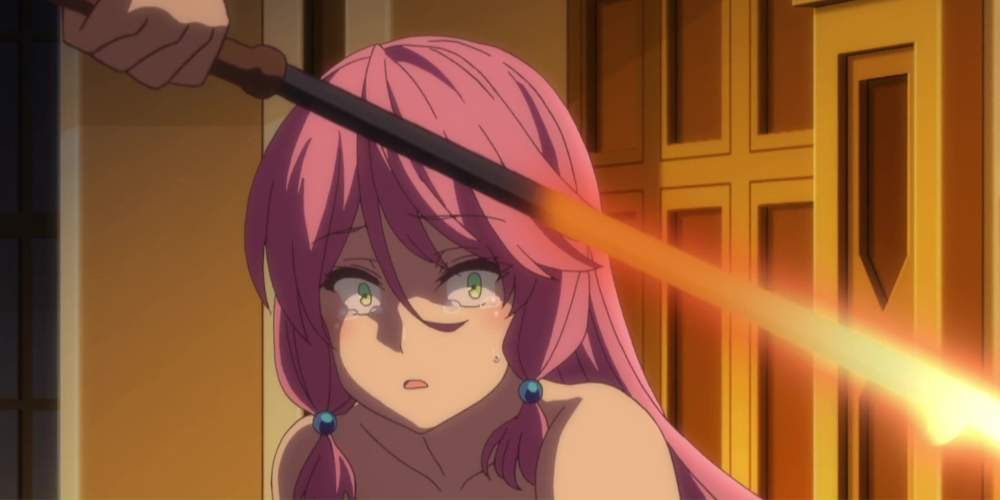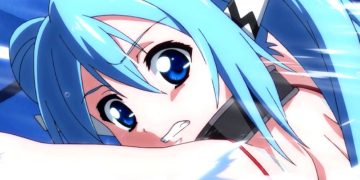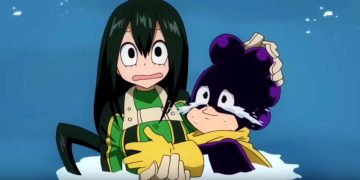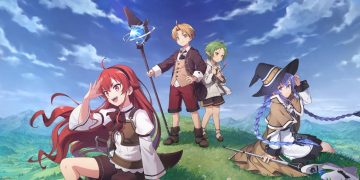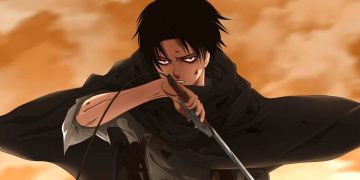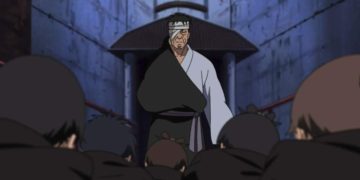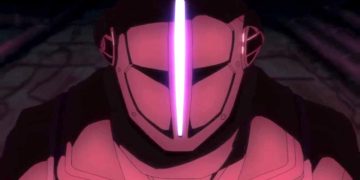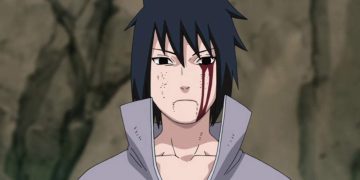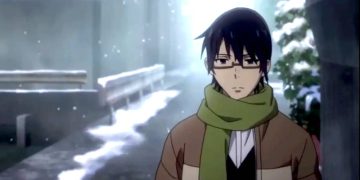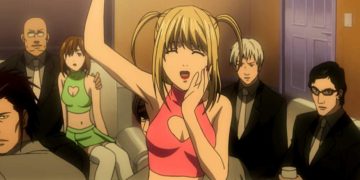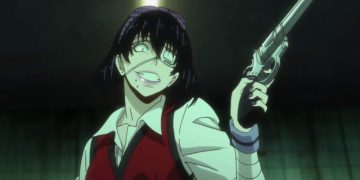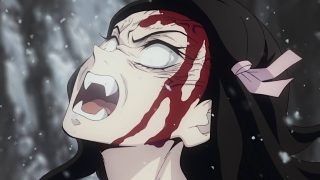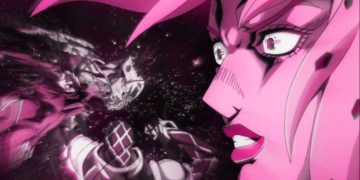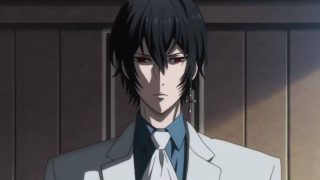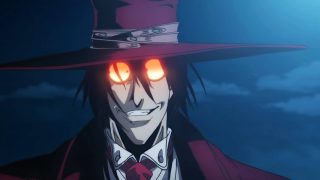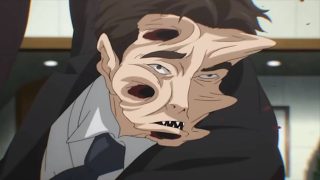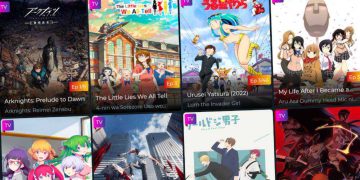If you think anime is only for kids, think again! There are lots of dark anime series that have mature themes, gratuitous blood and gore, frequent deaths, and even sexual content. (Think R-rated movies.)
Dark anime is technically not a genre but rather a classification that focuses more on the exploration of death, trauma, psychologically disturbing concepts, and explicit mature content.
It may look and feel the same as your typical shonen or shojo anime series, but you'll come across scenes that are plenty more gruesome, hair-raising, stomach-churning, and emotionally devastating.
Many dark animes are considered so dark that they've actually been banned in several countries.
From anime series that thrive in violence to anime series that feature psychologically disturbing stories that are truly twisted, here are the best dark anime series for mature viewers.
17. Angels of Death
Based on an adventure horror video game of the same name, the Angels of Death anime series features a survival game-like setting to which Rachel is confined, with each floor level having different obstacles and challenges to pass—including Zack, a serial killer.
The plot may seem like a normal anime series on paper, but there's a darker edge beneath their motivations for going forward and escaping the building. Also, there's a pact made that only Zack will kill Rachel, leading to an unusual relationship dynamic within the chaotic plot.
16. Neon Genesis Evangelion
Action, Drama, Mecha, Sci-Fi, Suspense
Originally aired 1995 to 1996
26 episodes (1 season)
At first, you might just assume Neon Genesis Evangelion is your typical mecha anime with giant robots fighting for Earth. And sure, that does describe its basic plot, but there's so much more to it than that.
Neon Genesis Evangelion centers on humanity's last stand against the incoming "angels" that aren't actually holy angels from heaven but monsters that destroy worlds.
Earth has one last line of defense: the Evas, which are robotic creatures piloted by individuals who are often way too young.
Neon Genesis Evangelion is a visual treat with badass fights and cool mecha designs, but if you dig into the story, you'll find pieces of lore that add up to a surprisingly dark premise.
From the truth about the Second Impact and the Human Instrumentality Project to the psychological trauma experienced by the characters from their own losses and depression, Neon Genesis Evangelion really is one of the darkest anime series.
15. Made in Abyss
Adventure, Drama, Fantasy, Mystery, Sci-Fi
Originally aired 2017 to 2022
25 episodes (2 seasons)
No one knows what the "Abyss" has in store, yet people keep sending others to dive deep down—all without any care as to whether they come back alive or not.
This plot in the Made in Abyss series is what makes it dark, featuring ideas like the "Curse of the Abyss," "Birthday Death Disease," and human experimentation to find out what's beyond the unknown.
Made in Abyss is the anime adaptation of the manga series of the same name that was written and illustrated by Akihito Tsukushi.
14. Attack on Titan
You've probably heard of Attack on Titan. It's popular, it's badass, and it's violent. The story about Titans threatening the last remnants of humanity is based on Hajime Isayama's manga of the same name.
There are a number of elements that make Attack on Titan darker than most anime series, including the gruesome deaths of many Corps members and the gory depictions of Titans eating humans. If you can't stomach body horror, you may not be able to watch this one.
Later on in the story, there's a lot of political intrigue and psychological exploitation that injects an even deeper level of darkness.
13. Tokyo Ghoul
The blood and gore in Tokyo Ghoul may not be as bad as some other series—like Attack on Titan—but the battle of Ken Kaneki in his own mind contributes to the psychologically disturbing element of the series.
There are also other characters who have the same kind of trauma, including Hinami, Amon, and Kurona, who have witnessed the disturbing deaths of their loved ones.
The series Tokyo Ghoul was based on the manga of the same name, written and illustrated by Sui Ishida.
12. Happy Sugar Life
One of the ways a dark anime series hides its true nature is to incorporate cute characters into the story. For example, Happy Sugar Life. This anime is an adaptation of the manga series of the same name, written and illustrated by Tomiyaki Kagisora.
Happy Sugar Life features Sato Matsuzaka, a teenage girl who loves a young girl named Shio and is dedicated to doing anything for her. This simple story masks the mystery and darkness of the plot, which is filled with hidden murderous and suicidal intents.
11. Berserk
Action, Adventure, Drama, Fantasy, Horror
Originally aired 1997 to 1998
25 episodes (1 season)
While the animation in the 2016 anime adaptation of Berserk looks modern and cool, the 1997 anime adaptation comes across as much darker because of its classic art style.
That said, both adaptations feature tons of brutal and disturbing scenes, accompanied by a heavy and oppressive ambiance.
The story revolves around Guts, a mercenary who hunts evil beings and monsters, especially the high ranking ones (the so-called God Hand). It explores the trauma of being sacrificial humans as well as the stories of his fellow mercenaries and their dark backstories.
10. Higurashi: When They Cry
Horror, Mystery, Supernatural, Suspense
Originally aired 2020 to 2021
39 episodes (2 seasons)
Want to dive into murder mystery stories that are far darker and more chaotic than what you'd find in traditional murder mystery anime series? Then Higurashi: When They Cry is the anime series for you.
Higurashi: When They Cry is adapted from a visual novel game of the same name, and it covers the story arcs of those games.
It has tons of violent and disturbing scenes, from murders and rage to people losing their sanity. It also creatively combines superstition, science fiction, and mystery to give us unexpected plot twists.
9. Redo of Healer
Redo of Healer is an anime adaptation of the light novel series written by Rui Tsukiyo and illustrated by Shiokonbu. It centers on Keyaru, a healing mage who was abused—physically, mentally, and sexually—by several heroes and guards in his life.
Unbeknownst to them, the low-level healing mage finds a way to turn the tables and exact revenge on everyone who did harm to him—by using the Philosopher's Stone to go back in time four years.
The Redo of Healer anime series features many scenes that you'd never see in typical shonen anime, including explicit content.
8. Another
If you're into paranormal horror, Another is a must-watch anime series. It's based on a horror novel of the same name by Yukito Ayatsuji.
The story follows Koichi Sakakibara and his encounter with a mysterious girl.
The animation is both unsettling and disturbing, which makes the series thrilling in a dark way. The plot is one of the creepiest you'll encounter in anime, made creepier by its setting and sound design.
The horror in the series makes it not suitable for young audiences, as it involves topics mainly surrounding death.
7. Devilman Crybaby
Devilman Crybaby is an original net animation based on the manga series Devilman by Go Nagai. It features a world where demons freely roam, disguising themselves as human beings through possession.
But some people manage to overpower the demon possessing them and take control of their powers. These people are the Devilmen.
The series' unconventional animation features disturbing and explicit scenes and graphic content, along with the violence in the plot and story, making it a truly dark anime.
6. The Future Diary
Love, survival, and death. These three elements are the major focal points of the Future Diary anime series, which centers on a survival game that's run by the God of Time and Space.
The deaths and the body horror—like when Yuno Gasai goes on her frequent killing sprees—are badass yet brutal. On top of that, you have a dark plot that involves emotional trauma and psychological horror, full of twists up until the very last episode.
5. Hellsing Ultimate
Wherever there's a vampire, there's also blood. And given that Hellsing centers on vampiric characters, you can expect tons of blood here, making it a perfect entry among dark anime series.
Apart from its bloody premise theme, Hellsing is also packed with intense fights where Alucard does what he does best: killing his victims while laughing maniacally, the last thing they ever hear.
If you're going to watch Hellsing, you should definitely watch Hellsing Ultimate instead, which was a rebooted effort that stuck more closely to the story in the original manga and more faithfully brought out the full darkness in its premise.
4. Hell Girl
Death and revenge are the two main topics featured in the Hell Girl anime series. What makes this series even darker is how it twists both death and revenge in unusual ways.
Hell Girl centers on the character of Ai Enma, a girl who runs a website called Hell Correspondence. Its clients are people who want to exact revenge on those who have done them harm.
And as if by magic, they get what they wish for when they submit requests to Hell Correspondence: their targets experience traumatic, agonizing pain (courtesy of Ai Enma's team) before they die.
However, this comes with a great cost: when the client dies, they will also be sent to hell. What goes around comes around, right?
3. Aoi Bungaku
Aoi Bungaku is an anthology anime series that features some of Japan's best literary stories. More specifically, six stories are portrayed across the twelve episodes of the series.
In Aoi Bungaku, you'll encounter themes of isolation, being cast aside, fear, desires, guilt, greed, and suicide, which are all rooted in the following Japanese stories:
- No Longer Human by Osamu Dazai (Episodes 1–4)
- In the Woods Beneath the Cherry Blossoms in Full Moon by Ango Sakaguchi (Episodes 5–6)
- Kokoro by Natsume Sōseki (Episodes 7–8)
- Run, Melos! by Osamu Dazai (Episodes 9–10)
- The Spider's Thread by Ryūnosuke Akutagawa (Episode 11)
- Hell Screen by Ryūnosuke Akutagawa (Episode 12)
Aoi Bungaku starts off like any normal anime, but beware! As the story goes on, unsettling twists start to unfold. Aoi Bungaku gives us an easy way to appreciate these well-known works of Japanese art.
2. Monster
Naoki Urasawa's Monster is a work of art when it comes to horror anime because the horror in this series isn't supernatural or paranormal.
Instead, Monster is disturbing in the way it explores ideas of humanity's morals, greed, guilt, innocence, and flaws, which are all exploited by the "monster" who toys with the people around him.
From triggering suicide and persuading murder to pulling off the perfect crimes, the titular "monster" of the series—Johan Liebert—manipulates others and plays with their lives while showing no remorse for their sufferings and deaths.
Johan Liebert is one of the most tragic and darkest characters in all of anime, and Monster is one of the most brutal anime series out there.
1. Junji Ito Maniac: Japanese Tales of the Macabre
Junji Ito, who's famous for his terrifying manga stories, has finally been getting the recognition he deserves thanks to the work of Studio Deen in bringing his stories to life in anime form.
Back in 2018, we got the Junji Ito Collection anthology, which adapted 24 of his stories into 12 episodes, plus an additional OVA that adapted one of his most famous stories of all time: Tomie.
In 2023, we got another anthology in Junji Ito Maniac: Japanese Tales of the Macabre, which is available to stream on Netflix. This one adapted another 19 stories into 12 episodes.
While Junji Ito is most known for his horrifically disturbing art style, these stories are all darkened further by the unsettling psychological horror that brews beneath the surface.
What if you were stuck in a never-ending dream? Or turned into a doll? Or if there was actually a Souichi stalking you? These might all sound tame, but the genius of Junji Ito rests in how he infuses all these ideas with a terrifying energy that infects your mind.
If you're looking for the darkest anime series, it's hard to think of anyone who could go darker than Junji Ito himself.
